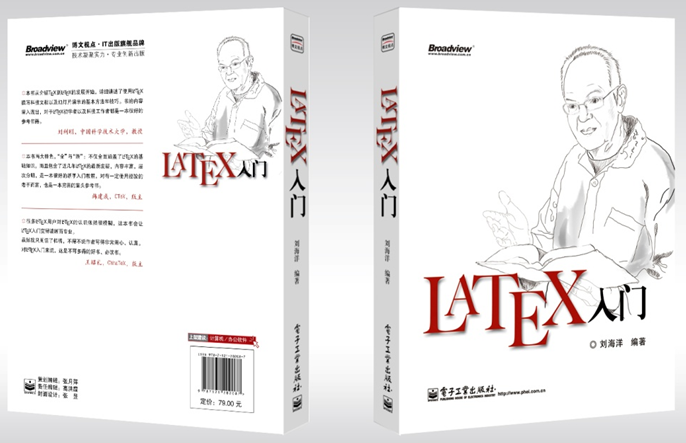
It is not too difficult to typeset English with LaTeX. But when LaTeX meets the Chinese language, the task becomes tougher. When I used LaTeX to typeset my first equation in 2009, I knew only one option: the CJK package [1]. At that time I could not find any book to help me to learn LaTeX typesetting of Chinese in depth. (I ended up using the CJK package for a long time, then switched to xeCJK [2] in 2010 and LuaTeX-ja [3] in 2012.)
Recently I at last found a book sold in bookstores and devoted to LaTeX typesetting of the Chinese language. The book covers every aspect of LaTeX interesting to Chinese (and most) users: float objects, tables, mathematical formulae, beamer presentations. Moreover, at the end of the book there is a short course of programming in LaTeX and plain TeX for the benefit of those readers who want to write their own macros. With many detailed examples, I feel the book should be recommended both to LaTeX beginners and more experienced users wanting to typeset Chinese.
This book recommends using the XeTeX package xeCJK to typeset Chinese. In the world of multilingual documents, XeTeX has become a very popular and convenient TeX engine. The package works very well with both Chinese and (with zxjafbfont [6]) Japanese. As far as I know, xeCJK is the best implementation of Chinese typography.
The author, Leo Liu, is a resident expert of the largest Chinese TeX forum CTeX [4]. He is the maintainer of xeCJK and zhmCJK [5].
♢ ♢ ♢
用LaTeX 来排版英文并不复杂。但是,当LaTeX 遭遇中文的时候,事情就开始变得棘手。 在2009年的时候,我用LaTeX 排出了我第一个数学公式,当时我只知道有CJK能处理 相关的中文问题。在当时,我找不到一本能引导我学习LaTeX 的书,尤其是处理中文方面。 我用CJK包用了很长时间,之后我换到了xeCJK (2010年)和LuaTeX-ja (2012年)。最近, 我发现书店里面正在卖一本新LaTeX 书。该书覆盖了LaTeX 的方方面面:浮动体处理, 表格,数学公式,beamer。在该书末尾,则给出了一个简短的关于LaTeX 以及plain TeX 的编程教程。这些内容可以满足那些想要实现自己的宏的读者们。书中附带了大量详尽的 例子,适合推荐给中国的初学者和在排版中文方面有问题的其他一些人们。该书主要使 用xeCJK来排版中文。在TeX 界,使用XeTeX是最流行的也是最方便的。而 xeCJK包可以完美处理中文和日文 (一个补丁版本叫做zxjafbfont)。据我所知,xeCJK是 中国排版传统的一个最好的实现。
该书作者,刘海洋,是中国最大论坛CTeX 的TeX 专家。他维护着xeCJK和zhmCJK两个包。
[1] Werner Lemberg, cjk—CJK language support, 2012. http://ctan.org/pkg/cjk.
[2] Jiang Jiang, Qing Lee, Leo Liu and Wenchang Sun, xecjk—Support for CJK documents in X E LaTeX, 2013. http://ctan.org/pkg/xecjk.
[3] Hironori Kitagawa, luatexja—Typeset Japanese with Lua(LA )TeX, 2013. http://ctan.org/pkg/luatexja.
[4] CTEX: Chinese TeX. http://www.ctex.org.
[5] Leo Liu, zhmcjk—Simplify configuration of CJK installations, 2012. http://ctan.org/pkg/zhmcjk.
[6] Takayuki Yato, zxjafbfont—Fallback CJK font support for xeCJK, 2012. http://ctan.org/pkg/zxjafbfont.